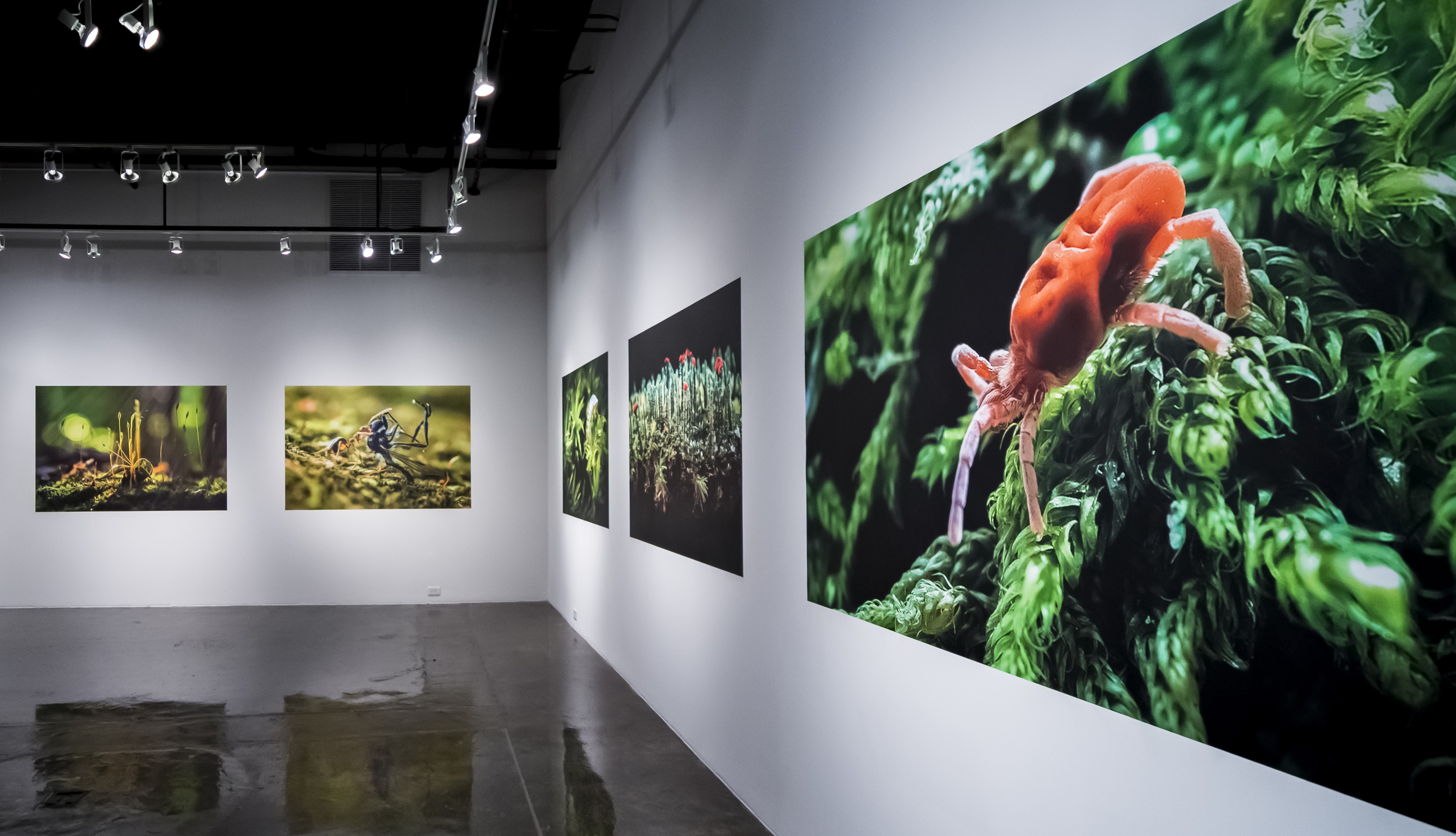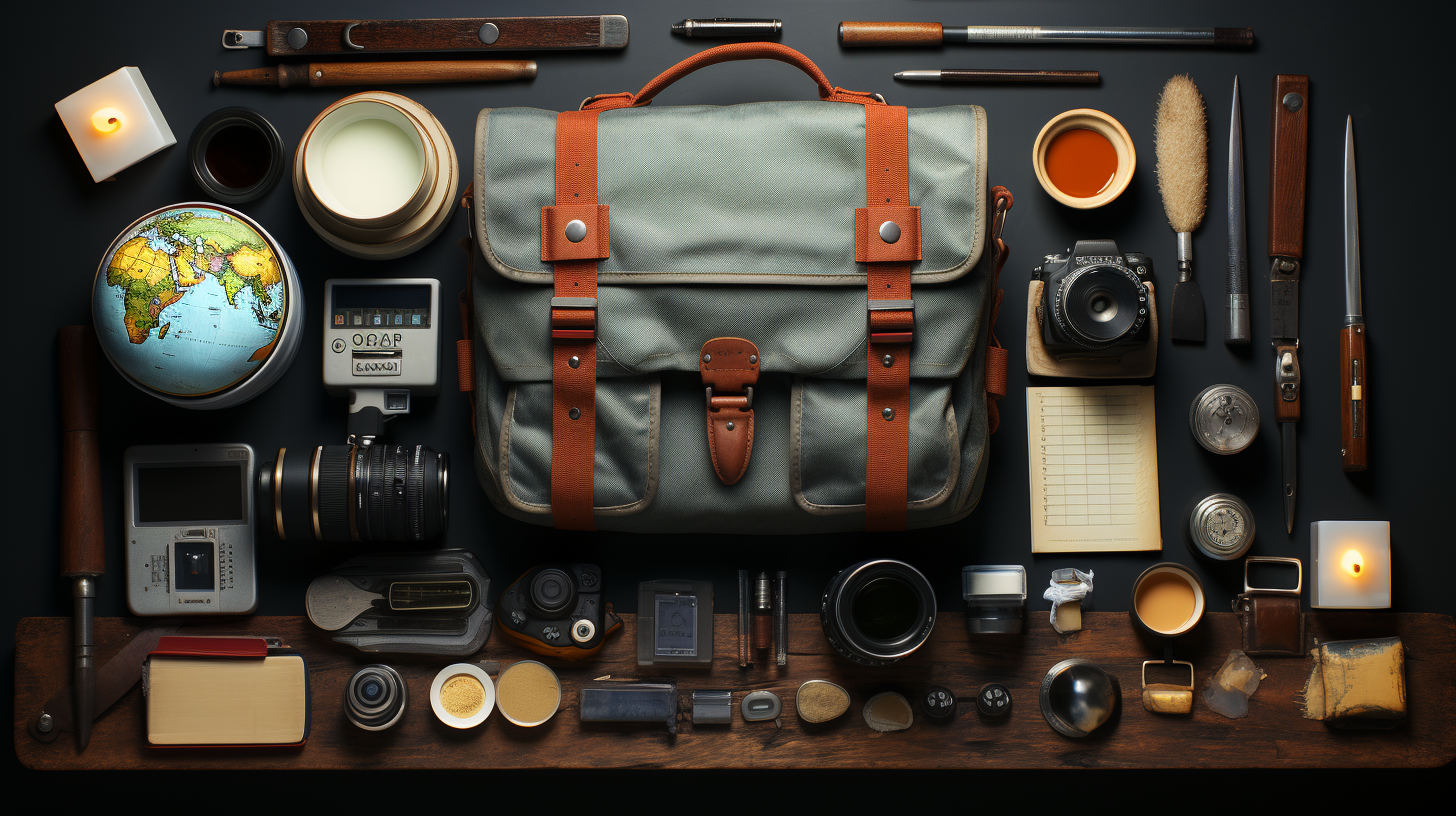
Have you ever wondered how professional photographers consistently capture eye-catching, visually stunning images? The secret lies in their mastery of design principles. They elevate photography from simply documenting moments to unlocking the art of captivating compositions.
Understanding core elements like line, shape, and color transforms random snapping into skillful photographic seeing. Applying principles like balance, contrast, and emphasis guides the viewer's eye and evokes emotion.
In this article, we'll explore the essential building blocks and techniques for photographic success:
Design principles such as line, shape, color, texture, form, and positive and negative space are important elements in photography.
The composition of a photograph, including framing, the rule of thirds, leading lines, and balance, plays a crucial role in creating visually appealing images.
Lighting is one of the three most essential elements in photography, composition, and storytelling.
Photographic seeing involves various aspects such as framing, depth perception, lighting, color perception, and composition.

Introduction to Design Principles in Photography
To create visually appealing and impactful photographs, it's essential to understand the elements of art and design principles. These elements, such as line, shape, form, color, and texture, provide the building blocks for composing a successful image. The principles of design, including balance, unity, contrast, emphasis, and movement, guide photographers in creating a harmonious and visually engaging composition.
By mastering these elements and principles, photographers can effectively communicate their vision and capture the viewer's attention.
What are the elements of art and principles of design?
Understanding the principles of art and design is essential in photography. The elements, such as line, shape, color, texture, and form, help photographers create visually appealing and impactful images. Principles such as balance, contrast, emphasis, and rhythm guide photographers in composing their shots and conveying their intended message.
By utilizing these elements and principles effectively, photographers can elevate the quality and impact of their photographs.

What are the three most important things about photography?
Photography's three most important elements are composition, lighting, and storytelling. Composition techniques help photographers frame their subjects and create visually appealing images. Lighting is crucial in setting the mood and highlighting the subject's features.
Storytelling through images allows photographers to capture emotions and convey a narrative to their viewers. These three elements work together to create powerful and impactful photographs, making them essential aspects of photography.

What is photographic seeing?
Photographic seeing is the ability to perceive and capture a subject's essence through a camera's lens. It involves utilizing seeing techniques, visual perception, creative vision, observational skills, and photographic aesthetics to create compelling and impactful images.
By understanding the elements of art and design principles, photographers can enhance their ability to see and capture the world around them in unique and innovative ways. This enables them to create photographs that evoke emotion, tell stories, and engage viewers on a deeper level.
Seeing Techniques | Visual Perception | Observational Skills |
|---|---|---|
Framing | Depth Perception | Attention to Detail |
Lighting | Color Perception | Patience |
Composition | Perspective | Curiosity |
Why is seeing art important?
Understanding the importance of observing and analyzing art is crucial in developing a solid grasp of the principles of art and design in photography. Seeing art allows photographers to appreciate the aesthetic qualities of different artworks, helping them create visually compelling images.
Additionally, art provides a means of visual storytelling, conveying emotions and cultural significance through imagery. By observing art, photographers can gain inspiration and enhance their creative vision, resulting in impactful photographs.
How do the elements and principles assist in the design process?
When considering the design process in photography, it is imperative to understand how the elements of art and design principles work together to create visually captivating images. These elements and principles play a crucial role in the composition of a photograph, guiding the viewer's interaction with the image.
Understanding and applying these elements and principles can significantly enhance the visual impact of a photograph, allowing photographers to create compelling and innovative compositions that engage viewers on a deeper level.
By utilizing techniques such as balance, contrast, and repetition, photographers can effectively communicate their intended message and evoke emotional responses from their audience.
The table below highlights key elements and principles and their importance in the design process:
Elements of Art | Principles of Design |
|---|---|
Line | Balance |
Shape | Contrast |
Form | Emphasis |
Color | Movement |
Texture | Pattern |
Space | Proportion |
Elements of Art in Photography
When it comes to the principles of art in photography, one of the key points to consider is the use of line in photographic compositions. Lines can lead the viewer's eye, create a sense of movement, or emphasize some aspects within the frame. Another critical element is shape, which is a building block of images. By utilizing different shapes, photographers can create visual interest and convey meaning.
Additionally, the concept of positive and negative space in photography is crucial. Understanding how to balance and utilize these spaces can significantly enhance the overall composition of a photograph.
Line in Photographic Compositions
Exploring the role of lines in photographic compositions contributes to a deeper understanding of the elements of art in photography. Line is an essential element that can guide the viewer's eye through an image, creating visual direction and leading lines that draw attention to specific subjects or elements within the frame.
Here are some ways lines are used in compositions:
Diagonal lines add dynamism and energy
Horizontal lines create stability
Vertical lines evoke strength and grandeur
Leading lines provide depth and perspective

Shape as a Building Block of Images
When it comes to photography, understanding the role of shape is crucial in creating visually compelling images. Form and perspective in photographs help to give a sense of depth and dimension, adding interest and impact to the composition. Additionally, incorporating texture into photos can bring them to life, adding a tactile element that engages the viewer's senses.
By utilizing these elements effectively, photographers can create images that are not only visually pleasing but also convey a sense of depth and realism.

Form and Perspective in Photographs
Form and perspective play a crucial role in creating impactful photographs, as they shape the image's overall composition and visual impact.
Some techniques utilizing form and perspective include:
Rule of thirds for dynamic composition
Leading lines to guide the eye and create depth
Perspective to convey the intended message and evoke emotion
Texture to Bring Photos to Life
Texture is a fundamental element of art in photography, working in conjunction with form and perspective to bring photos to life. It is crucial in bringing depth and adding dimension to an image. By capturing details and enhancing composition, texture creates visual interest and adds a tactile quality to photographs.
Whether it is the rough surface of a tree bark or the smoothness of a glass, texture enriches the viewer's experience. It adds a layer of realism to the image.

Positive and Negative Space in Photography
The elements of art in photography, particularly positive and negative space, play a crucial role in creating visually captivating compositions.
Positive space refers to the photograph's main subject or focal point filling the frame (above) to capture the viewer's attention. Negative space is the area around the subject that's empty and provides balance, depth, or more context to an image (below).

How do the elements of art play an important role in photography?
The elements of art in photography, particularly positive and negative space, play a crucial role in creating visually captivating compositions. Positive space refers to the photograph's main subject or focal point, drawing the viewer's attention and conveying the intended message. Negative space, on the other hand, is the area around the subject, providing balance, depth, and context to the image.
Principles of Design in Photography
Concerning design principles in photography, achieving balance in photo composition is critical. By carefully considering the placement of elements within the frame, photographers can create a sense of harmony and visual equilibrium. Additionally, movement and stillness can be used to express energy in a photograph, whether it's capturing the motion of a subject or creating a moment of quiet contemplation. These principles play a crucial role in creating captivating and visually impactful images.

Achieving Balance in Photo Composition
Achieving balance in photo composition involves strategically positioning elements within the frame to create a harmonious visual arrangement.
Some techniques for balanced compositions include:
Rule of thirds to divide the frame into a grid
Balancing the visual weight of elements
Symmetry vs. asymmetry to create equilibrium
Using leading lines for balance and movement
Movement and Stillness to Express Energy
To convey energy in a photograph, strategic use of movement and stillness creates a dynamic visual experience. Motion can be depicted through panning techniques or blurring movement. Stillness builds tension and anticipation by freezing a moment. Combining movement and stillness enhances compositions with energy and dynamism.

Master the Art of Photographic Seeing
To master the art of photographic seeing, one must first understand the importance of framing images through the lens. The composition and arrangement of elements within the frame can greatly impact the overall visual impact of the photograph. Additionally, lighting and shadows enhance or detract from the desired effect. Ultimately, a successful picture relies on the careful balance and interaction of these elements and principles.

The Role of Lighting and Shadows
A photographer's mastery of lighting and shadows is crucial in mastering photographic seeing. Lighting techniques like backlighting, side lighting, and Rembrandt lighting add depth and enhance visual impact. Shadows also play a significant role by adding dimension and drama to a composition. Understanding lighting and shadow manipulation elevate the quality of photographs by innovating and capturing captivating images.

How the Elements and Principles Interact in Photographic Seeing
Incorporating elements and principles of design in harmony allows photographers to create visually compelling images that effectively tell a story. By blending these aspects skillfully, photographers can achieve robust and innovative photographic seeing.
Some techniques for interacting elements and principles include:
Leading lines to guide the eye and create movement
Composition techniques like the rule of thirds for balance
Depth through foreground, middle ground, and background
Color theory for mood, emotion, and visual impact
Conclusion: Bringing Design Principles Together for Powerful Photography
Mastering photography requires blending elements and principles of design to create impactful images. Composition, lighting, color, and other techniques elevate photographs. Taking a comprehensive course and accessing a toolkit bundle facilitates developing skills to utilize design principles for powerful, visually captivating pictures. The first step is starting the learning journey to become a skilled photographer.
Blending Elements and Principles into Photographic Seeing
Blending elements and principles is essential for powerful photography through photographic seeing. Incorporating design elements and principles create visually stunning, impactful images.
Key considerations when blending elements and principles:
Achieving balance through visual weight distribution
Framing images to guide attention
Lighting and shadows to enhance mood and atmosphere
Leading lines for depth and dimension

Start Your Learning Adventure!
Elevate Your Photography Journey with My Upcoming Course & Toolkit
Interested in unlocking your full potential as a photographer?
Join the waitlist for my upcoming photography course and toolkit bundle - launching soon!
COURSE: Design Principles for Photographers
✅ In-depth knowledge of design principles
✅ Step-by-step techniques for composition
✅ Real-world examples and case studies
✅ Interactive learning modules and exercises
The Notion toolkit will include:
✅ Camera presets to speed up workflow
✅ Photo filters and overlays for styling
✅Retouching tools for perfecting images
✅ Notion resource hub to reinforce learning
Whether you're a beginner looking to master the basics or an experienced photographer wanting to refine your skills, this course and toolkit will take your work to the next level. Spots are limited for early access, so join the waitlist today and be first to enroll when we launch! I can't wait to share this exciting program and empower you to become the skilled, creative photographer you've always aspired to be!



